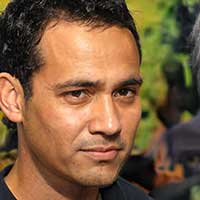Lead Data Architect Job Description
The Lead Data Architect, Data architect job description, Dat Architecture: A Data Engineer's Perspective, Big Data, Data Architects, Data Architecture: An Introductory Program for Data Scientists and more about lead data architect job. Get more data about lead data architect job for your career planning.

The Lead Data Architect
The Lead Data Architect works in all data environments. The Lead Data Architect works on a wide range of problems.
Don't miss our story on Security Lead job guide.
Data architect job description
A data architect builds databases to store and organize information. Data architects may create conceptual and physical strategies for data acquisition, integration and analysis, and they may work closely with other IT experts to integrate new technologies into an infrastructure that supports required capabilities. A bachelor's degree in computer science, information technology or a similar field is a must for a datarchitect job description.
Datarchitect positions require a lot of experience as a database administrator designer. Datarchitects must have a good technical knowledge and creativity. Communication skills are important to end users and IT personnel.
Dat Architecture: A Data Engineer's Perspective
The four-letter word DATA is a tremendous force that drives modern-day businesses. There is no shortage of organizations that try to harness the power of data to find solutions to problems, make informed decisions, deploy strategy efficiently, and run smooth business operations. Data architecture is an organizational framework that standardizes the process of data collection, storage, transformation, distribution, and usage.
The framework is created to make the most relevant pieces accessible to authorized people at the right time. Datarchitecture is a method of converting business needs into datand system requirements, aligning business processes with IT systems, and managing the flow of datand information within the organization. Datarchitecture is considered a business and technical decision in a report on the trends of the year.
A survey by Recruiter.com found that only 3.9% of data management professionals chose to be self-employed, while 96.1% of them were snapped up by organizations that wanted to leverage data for tactical business advantage. The survey predicted that demand for datarchitects would increase at a rate of 15.94% over the next few years. The average data architect salary was estimated by the Robert Half Technology 2020 Salary Guide.
A datarchitect is able to understand the business needs, explore the existing data structure, and create a plan for building an integrated framework of easily accessible, secure dataligned with business strategy. The data architect defines the processes involved in testing and maintaining the database. A Data Architect takes into account all data sources and outlines a design to integrate, centralize and maintain the data.
A Data Engineer is responsible for testing and building sustainable Data Architectures for easy data search and retrieval. Datarchitects and data engineers work together to build a sound datarchitecture. A data architect needs to coordinate and collaborate with users, system designers, and developers in their day-to-day functions.
Don't miss our story on Shift Leader job guide.
Big Data
Big Data is a career that can be taken up by good people with experience, as there are more jobs that will be opened in the future.
Data Architects
Data Architects should have a lot of knowledge of the industry and trends so they can solve issues quickly. Data for business purpose can be provided, which can include identification of key performance indicators, product improvement, business decisions on growth, and expenditure evaluation. Data modelling is a skill.
The data model and design principles are important to the Architect. Communication between Architects and data in their organization is dependent on understanding the data flow and hierarchy. Data Architects should be able to design models that can solve problems for businesses and users.
Data should be easy to find and well defined so that it is understood. Data quality and integrity should be managed. Data Architects understand how computers and humans interact to resolve data driven problems.
Don't miss our column on Data Evaluator career planning.
Data Architecture: An Introductory Program for Data Scientists
Data architects are IT professionals who use their computer science and design skills to review and analyze the data infrastructure of an organization, plan future databases, and implement solutions to store and manage data for organizations and their users. The volume of data that businesses and organizations deal with is growing. Business leaders rely on data to make sound decisions.
It's important for consumers to make sure that their data is kept safe. The most common entry level requirement for datarchitects is a bachelor's degree. You should consider a degree in computer science or data science to start building the skills you will need on the job.
There are many boot camps, workshops, and courses online that can help you improve your skills in data management. If you are new to data, you might consider an introductory program like the IBM Data analyst Professional certificate. As you get further along, consider classes in more advanced topics.
A data architect job is not usually an entry level position. Employers typically look for datarchitects with at least three to five years of experience in a related field such as database administration, programming, managing data systems, or a similar role. You could start out as a datanalyst, data engineer, or solution architect.
Datarchitecture skills can open professional possibilities in a variety of industries. If you want to start a career in data, you should enroll in the IBM Data Engineering Professional Certificates. You can build skills in less than six months.
Data Integration and Access for Large-Scale Organisations
Key insights are put in the hands of decision makers at all levels of the organisation by defining and resolving complex data collection, data integration, data storage and data access challenges. The dataspects of the organisation are a critical success factor and the datarchitect can help clients with cross-cutting programmes where the dataspects are important.
See also our paper on Application Architect career guide.









X Cancel







